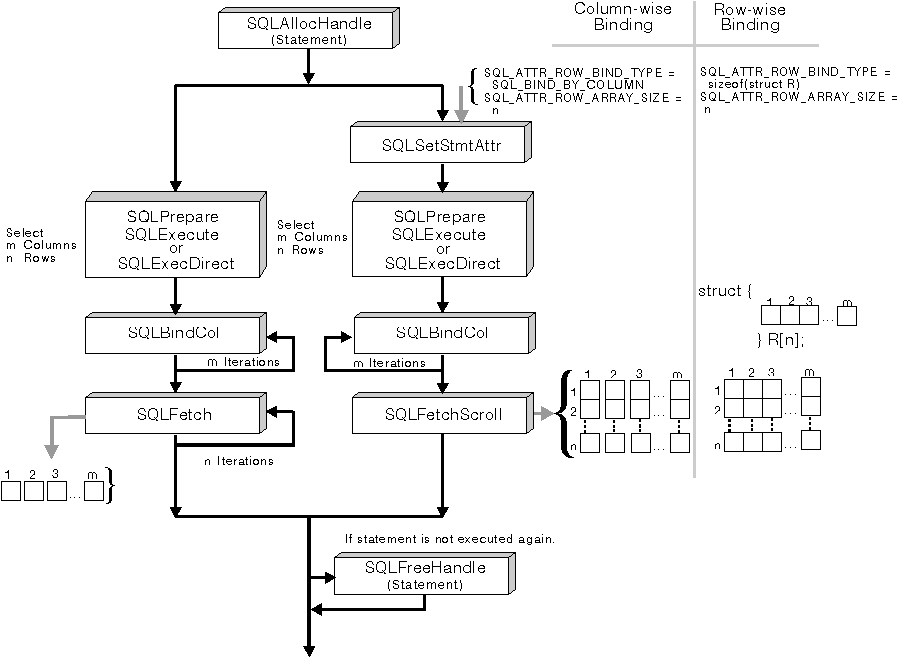

The application can also do row-wise binding which associates an entire row of the result set with a structure. In this case the rowset is retrieved into an array of structures, each of which holds the data in one row and the associated length fields. Figure 13 gives a pictorial view of row-wise binding.
To perform row-wise array retrieval, the application needs to call SQLSetStmtAttr() with the SQL_ATTR_ROW_ARRAY_SIZE attribute to indicate how many rows to retrieve at a time. In addition, it must call SQLSetStmtAttr() with the SQL_ATTR_ROW_BIND_TYPE attribute value set to the size of the structure to which the result columns will be bound. DB2 CLI treats the deferred output data pointer of SQLBindCol() as the address of the data field for the column in the first element of the array of these structures. It treats the deferred output length pointer as the address of the associated length field of the column.
The application then calls SQLFetchScroll() to retrieve the data. When returning data, DB2 CLI uses the structure size provided with the SQL_ATTR_ROW_BIND_TYPE attribute to determine where to store successive rows in the array of structures.
Figure 14 shows the required functions for each method. The left side shows n rows being selected, and retrieved one row at a time into m application variables. The right side shows the same n rows being selected, and retrieved directly into an array.
 |